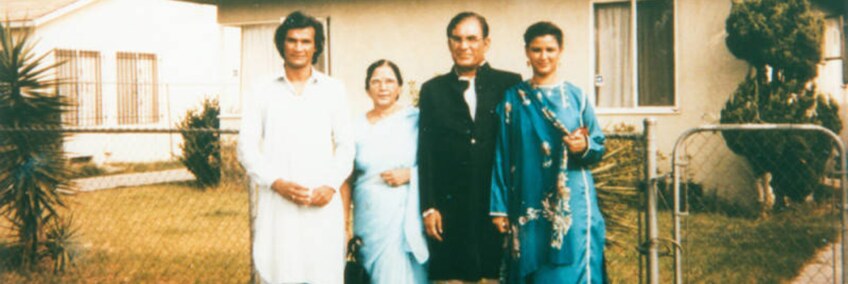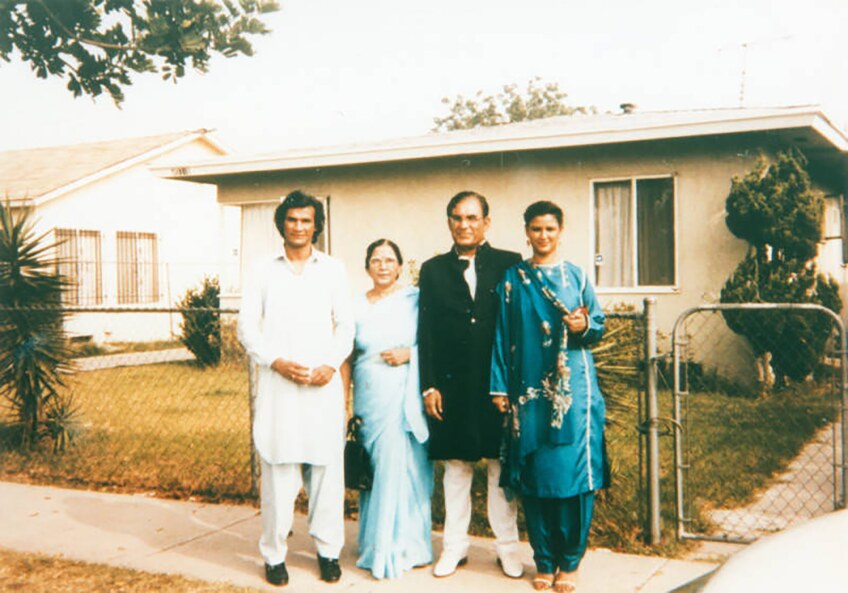Multifaceted: The Cultural Diversity of Asian America

Not all Asians look alike, nor are all Asian American experiences the same. That sounds like common sense, yet for generations in America the representation of Asians has been reduced to racial stereotypes that linger painfully.
Asian Americans have been historically misrepresented as a monolithic group, but within this broad category lies a wealth of divergence in perspectives, history and culture. Asia is home to 2,197 languages. Twenty million Asian Americans can trace their ancestral origins to over 20 countries in East, Southeast Asia and the Indian subcontinent. 94% of the total Asian population in the U.S. includes 19 of the largest groups: Bangladeshis, Bhutanese, Burmese, Cambodians, Chinese, Filipinos, Japanese, Hmong, Indians, Indonesians, Koreans, Laotians, Nepalese, Malaysians, Mongolians, Pakistanis, Sri Lankans, Thai and Vietnamese. Within each of these origin groups are unique histories, cultures and languages. The Chinese, for example, have 56 officially recognized ethnic identities. More often than not, outside of what gets “officially” recognized are the Indigenous Asian populations. Asia and the Pacific region is home to more than 260 million indigenous people, making up 70% of the global indigenous population in the world. Moreover, due to immigration, migrations and displacements, there are many multiethnic groups, such as Teochew people who are of Chinese and Vietnamese descent like myself.
The Asian experience in America is richly complex and intersectional, more than most people realize. From model minority to yellow peril, the narratives of Asian Americans have been largely told through a dominant White settler lens. How do we begin to know ourselves when our histories have been erased, poorly documented, and our identities lumped into a singular category? Reclaiming narratives by sharing our stories is a good start.
“History is not the past,” said Grace Lee Boggs, the late civil rights leader in her book, “The Next American Revolution.” “It is the stories we tell about the past. How we tell these stories — triumphantly or self-critically, metaphysically or dialectically — has a lot to do with whether we cut short or advance our evolution as human beings.”

The stories of Asian America matters. It confronts structural discrimination by honoring and preserving our individual and collective existence as a people. Here are just a few Asian American experiences that remain largely hidden from mainstream narratives.
Hmong Florists of Pike Place Market
At the famous Pike Place Market in Seattle, Washington, beautiful flowers adorn the stalls year-round. In the warm spring you can find massive bouquets of colorful tulips and dahlias for sale, while in the colder winter dried flowers are cleverly coupled with cabbage roses. There is just one single community that brought this iconic sight to this iconic Market, the Hmong, an ethnic group from the highlands of Southern China, Vietnam and Laos. Though beautiful to see, behind the colorful bouquets is a complex story of tragedy, perseverance, kinship and finding a place to call home.

According to the Pew Research Center, there are about 299,000 Hmong living in the United States with the most concentration in cities like Minneapolis-St. Paul and Fresno. Hmong largely arrived in the United States between the 1970s and 1980s as refugees after the Indochina Wars in Southeast Asia (1945-1991). In an operation called the “Secret War,” the United States’ Central Intelligence Agency (CIA) recruited thousands of Hmong in Laos during this time in an effort to combat the communist insurgency. Although not all Hmong participated in the war, stateless Hmong faced brutal persecution. Under these circumstances, 200,000 Hmong fled into Thai Refugee camps.
With a culture of farming, the migration of Hmong from around the country have been motivated by their ability to purchase and work on farms. Given the barriers that exist in acquiring farmland, one regional effort in Washington State are land lease programs, including the Indochinese Farm Project. This land co-op program supports Hmong farmers with access to land and a community network. Funded in part by King County and the Pike Place Market Preservation and Development Authority, the program supports Hmong families with farmland to grow flowers and produce to sell at local farmers’ markets.
“Our people have been through so many hardships and persevered through a lot. Like always, we will adapt” says Mary Thao, of Xai C. Farm in Snohomish, Washington. Along with many Hmong farmers, Thao and her family worry about overcoming this coronavirus recession. Without weddings and the normal bustle of Pike Place Market, how will they sell their flowers? Thao and her family quickly changed their business model by building out a website and coordinating no-contact delivery and pick-up spots. “The pandemic is crappy for everyone, but the community is showing up for us,” says Thao. “Pike Place Market, our neighbors, friends and even strangers from Facebook are supporting us and organizing community purchases. My heart is filled with hope. We’re all in this together and we’ll get through it together.”
Retracing Bengali Harlem
Similar to the Hmong experience, there are other narratives in the Asian American experience that are hidden from our consciousness. In the book “Bengali Harlem,” MIT professor Vivek Bald reconstructs the lost histories of South Asians in America. Towards the end of the 19th century through the first quarter of the 20th century, hundreds of Muslim men from India, Pakistan, and what is now Bangladesh came to the United States. Some came as seamen on British steamers and jumped ship to find a better life onshore. Others packed up bags of ornate textiles and handicrafts from their native villages to sell in the American market that prized “Oriental” goods. Bald traces the South Asian American experiences of these men to particular pockets of the United States. Rather than creating their own ethnic enclaves, the South Asian men found home in communities of color like Harlem, Detroit, Baltimore and New Orleans. There, they settled down and married black and Puerto Rican Americans.
“Bengali Harlem” stemmed from conversations Bald had with Alaudin Ullah, a New York-based actor and playwright and the son of Habib Ullah, one of the Bengali men who immigrated to the United States. To further tell this story, the two teamed up to create “In Search of Bengali Harlem,” a documentary feature film currently in production. Together Bald and Ullah journeyed and interviewed some of the remaining members of the “Bengali Harlem” community, who are now in their 60s, 70s, and 80s. From factory work to opening the first Indian restaurants in the city, the film navigates the intersections of Bengali, Latino and African American cultures to tell the stories of where the unearthed archives left off.
Chino-Latino Cuisine
Another mixed-race group is Asian Latinos. Stemmed from the backlash of the 1882 Chinese Exclusion Act, tens of thousands of Chinese immigrants were denied entry to the United States. This resulted in an influx of immigration into Latin America in countries like Mexico. According to Robert Chao Romero, a UCLA professor and author of “The Chinese in Mexico,” about 60,000 Chinese entered Mexico during the late nineteenth and early twentieth centuries, which represented Mexico’s second-largest foreign ethnic population at the time. His book discusses the development of the “Chinese transnational commercial orbit” during this time of exclusion, which created an economic and trade network between China, Latin America, Canada and the Caribbean. That paved the way for Chinese immigration to happen in other countries including Cuba, where in the second half of the nineteenth century, nearly a quarter of a million Chinese migrants worked on sugar plantations.
Across the United States today, there are nearly half a million Asian Latinos, mostly concentrated in New York, Texas and California. From this diverse population, a beloved fusion food category has emerged. Known as Chino-Latino cuisine, it’s found in Asian Latino communities across the U.S.-Mexico borderlands to New York City. Though the word “Chino” signals “Chinese,” this nuanced food category encompasses an eclectic mixture between the diverse cultures that exist under the broader umbrella identities of Asian and Latino. At La Dinastia in New York City, you can order fried rice and maduros (fried plantains). At El Dragon in Mexicali, egg rolls are served Chinese-Mexican-American style with shrimp, cilantro and cream cheese. This convergence of Asian and Latino cultures represents the development of new identities that have emerged over time, ones that cannot be contained in any box, but perhaps only a takeout one.
Top Image: Syed and Qaiser with their children Qamar and Faozia in front of a home in Los Angeles. | Shades of L.A. Collection / LAPL









